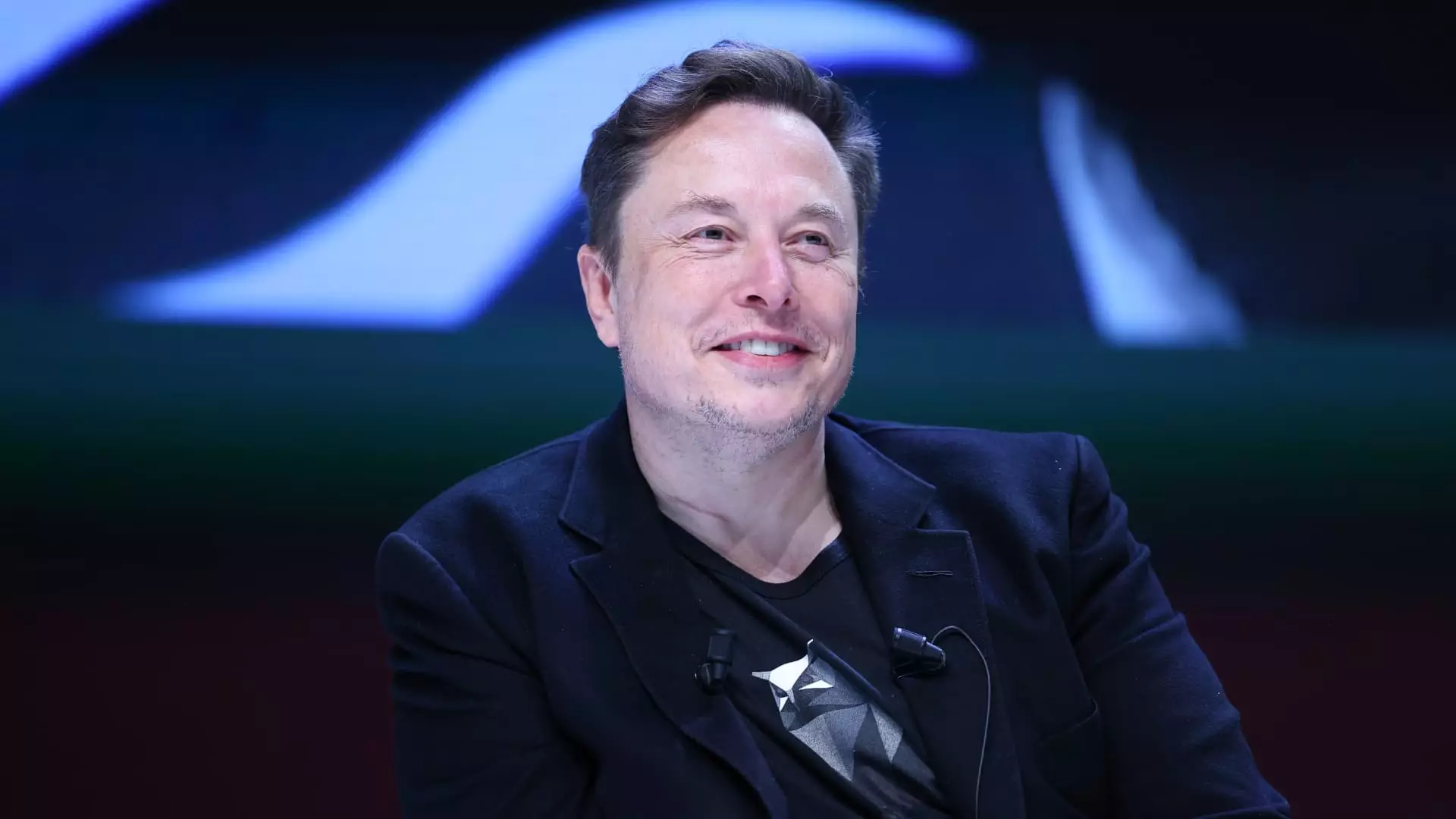Tesla Inc. has recently captured the attention of the financial markets, witnessing an impressive rebound that has led to discussions about its future viability and market positioning. Following a substantial rally not seen since 2013, Tesla’s stock demonstrated significant movements, making it essential to delve deeper into what these fluctuations mean for the company and the broader electric vehicle (EV) market.
The day after a remarkable 22% surge in its stock price, Tesla shares were poised for their highest close in over a year, emphasizing the stock’s resilience. This upward trajectory, with an increase of 2.8% to $267.79, reflects a surge of investor confidence that has reignited interest in the company’s potential for growth. Such sharp changes in stock performance often indicate underlying investor sentiments—where optimism can be influenced both by quantitative metrics and qualitative factors, such as leadership commentary and market positioning.
The catalyst for this newfound optimism stemmed from Tesla’s third-quarter financial results. Although the company’s revenue of $25.18 billion fell slightly short of analysts’ predictions, they reported a significant year-over-year improvement. The adjusted earnings per share were markedly higher than anticipated, demonstrating the company’s ability to maintain profitability despite some market pressures. Notably, Tesla’s profit margins were bolstered by revenue from regulatory credits and its Full Self-Driving (FSD) system, raising questions about the sustainability of such profit sources in the long term.
Recent analyst upgrades, such as those from Piper Sandler, included an increase in the 12-month price target from $310 to $315. This upward revision reflects a consensus about Tesla’s enhanced delivery rates and profitability—factors that greatly influence stock valuations. Analysts remain divided, however, as some express concerns about Tesla’s reliance on potentially volatile revenue streams like environmental regulatory credits. Others share skepticism about Musk’s ambitious plans for future vehicle production and autonomous technology, stating that Tesla lags behind its competitors in the race toward fully autonomous driving capabilities.
As Tesla attempts to maintain its competitive edge, it faces the daunting specter of an increasingly crowded EV market. Traditional automakers like General Motors and Ford have initiated aggressive electrification programs, while Chinese competitors such as BYD and Nio are also vying for market share with innovative offerings. This escalation of competition not only puts pressure on Tesla’s sales but also raises concerns about its market saturation and growth strategies.
Challenges Ahead: Sustainability and Competition
Despite the optimistic trend, several challenges loom large on the horizon. Tesla’s stock still grapples with a significant deficit from its all-time high reached in 2021, underscoring just how volatile the market can be. Additionally, the company’s plans to launch a driverless ride-hailing service highlight the precarious line between ambition and reality. Musk’s history of missed deadlines casts a shadow over these promises, making investors wary of potential disappointments ahead.
Furthermore, analytical insights suggest that the assumption of continued growth may overlook various competitive risks. While Musk anticipates a vehicle growth of 20% to 30% next year, FactSet analysts are forecasting only about 15% growth for 2025. Such discrepancies signal a disconnect between optimism and market realities, revealing the fragile nature of Tesla’s current standing.
Elon Musk’s ingenuity and ambitious projects have enabled Tesla to become synonymous with electric vehicles in many consumers’ minds. However, the pathway to sustainable growth is fraught with complexities, from capturing market share in a competitive landscape to ensuring that its autonomy claims materialize. The company’s future may hinge on its ability to navigate these various factors while continuing to innovate.
While Tesla’s recent stock performance points to a recovery phase, there are numerous hurdles that could hinder long-term growth. The continuing scrutiny of its financial reports, coupled with persistent competitive pressures, will require Tesla to adapt quickly. As investors weigh the company’s potential against emerging uncertainties, the journey for Tesla may still have a few twists and turns ahead.

